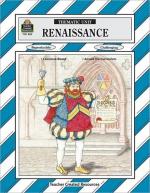|
This section contains 3,799 words (approx. 13 pages at 300 words per page) |

|
Knights. In 1350 the heavily armored cavalryman known as the knight still dominated the battlefields of central and western Europe, as he had since the Battle of Hastings (1066). He was identified by his horse, armor, and weapons. Although it was not a violation of the knightly code to fight on foot, to be a true knight was to be on horseback, wear armor, and engage in hand-to-hand combat using couched lance, broadsword, and other shock weapons such as maces. By 1350 the knights had adopted plate armor replacing the chain mail of earlier centuries because of improvements in infantry weapons. It doubled the thirty-pound weight of chain mail and was more than twice as expensive. After 1350, armor was often placed on horses. The increased protection given by plate armor required that the knight's weapons be made stronger.
Lance. The lance was wooden with a...
|
This section contains 3,799 words (approx. 13 pages at 300 words per page) |

|




